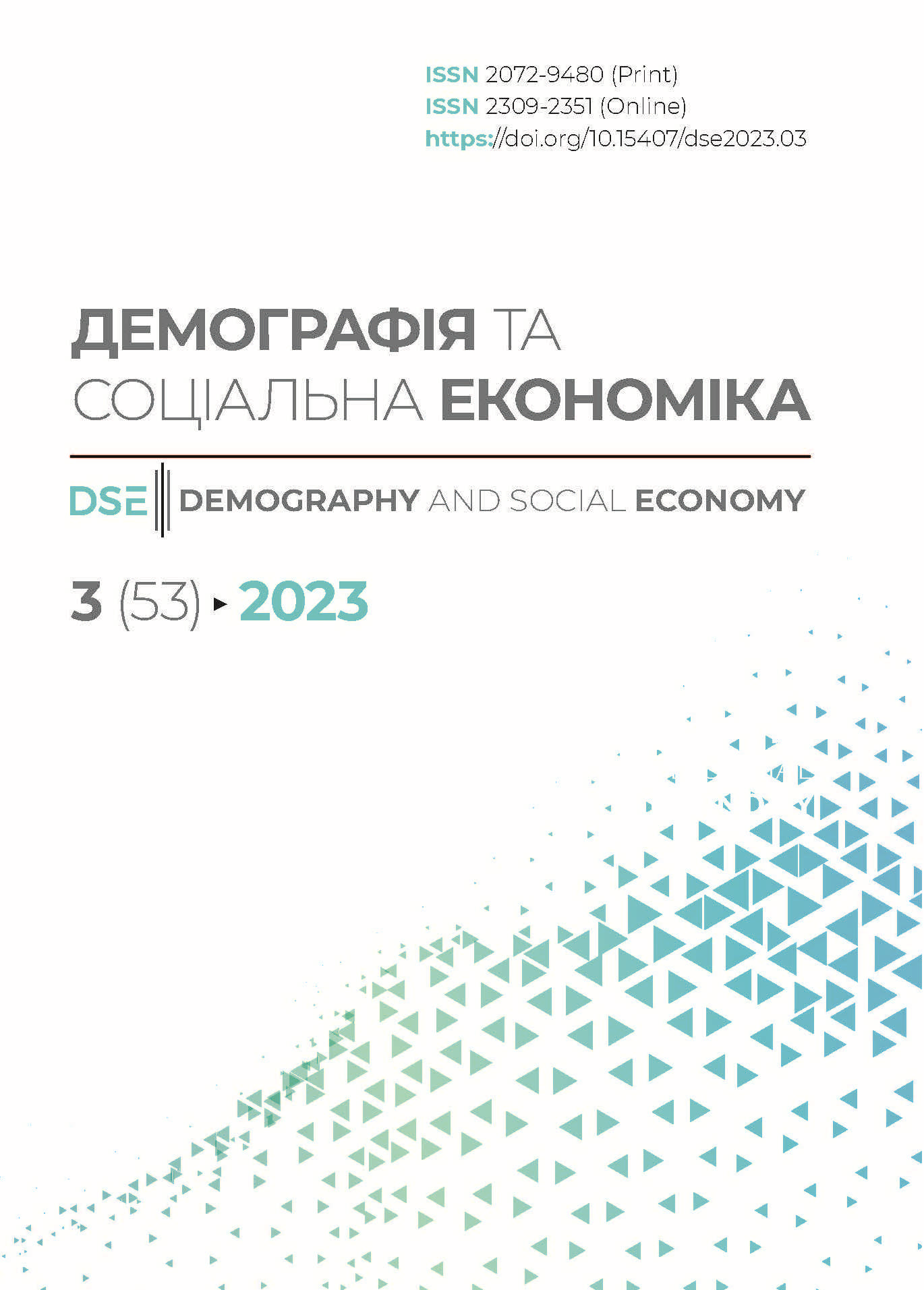MODELS OF HOUSEHOLD CONSUMER BEHAVIOR: EVOLUTION FROM UNITARY TO COLLECTIVE
DOI:
https://doi.org/10.15407/dse2023.03.079Keywords:
household, consumer behavior, classification, unitary models, collective models, utility function, equivalence scaleAbstract
The problems of estimating and forecasting the economic behavior of households attract more and more attention of scientists, experts and even politicians. This is explained mainly by the popularity of modern tools for ex-ante assessment of the impact of economic and social reforms on the most important aspects of the population’s life: consumption of goods and services, economic activity, needs for social support, satisfaction with the standard of living and living conditions, etc. The article, which is primarily an overview, examines the peculiarities of the formation and development of unitary and collective models of consumer behavior of households, as a theoretical basis for the development of applied tools for evaluating corresponding economic processes. The main principles of creating unitary and collective models are highlighted, and the main advantages of the collective approach are substantiated. Some attention is paid to the role of the Pareto principle of efficient resource allocation in modeling the household behavior, and to the problems of forming equivalence scales of household incomes and expenditures. Issues of the effectiveness of the microsimulation approach in the development of applied tools for assessing the economic behavior of households, and the formation of an information support system for microsimulation modeling are discussed. It is noted that although microsimulation modeling is a relatively new area of research on the household economic behavior, it can ensure the development of adequate and effective applied reduced collective models. The characteristics of the household time use survey, as one of the main data sources for creating collective models, are given. The importance of the availability of representative microdata sets of other sample surveys characterizing both households and their members, in particular, such as the household income and living conditions sample surveys and labor force surveys is noted. The purpose of the article is to assess the evolution of economic models of household consumption behavior from unitary to collective, to determine the essence and advantages of collective models, to identify opportunities and effective ways of their practical usage for modeling the behavior of Ukrainian households. The novelty of the article is in the study of models of household behavior both in the historical perspective and from the point of view of increasing their adequacy based on more realistic assumptions and ways of formalizing models, determining the prospects of a microsimulation approach for the development of applied collective models. In the process of preparing the article, while summarizing the experience of scientific research in the field of modeling the economic behavior of households, methods of deduction and induction, analysis and synthesis were used. Comparison method made it possible to compare the unitary and collective approaches in modeling the consumer behavior of households, identify their similarities and differences. The conclusions summarize the main theses of the article and highlight the main directions of further research.
REFERENCES
- Blundell, R., Chiappori, P. A., & Meghir, C. (2005). Collective Labor Supply with Children. Journal of Political Economy, 113 (6), 1277—1306. https://www.researchgate.net/publication/24104437_Collective_Labor_Supply_with_Children https://doi.org/10.1086/491589
- Bourguignon, F., Browning, M., & Chiappori, P.-A. (2009). Efficient Intra-Household Allocations and Distribution Factors: Implications and Identification. The Review of Economic Studies, 76 (2), 503—528. https://doi.org/10.1111/j.1467-937X.2008.00525.x
- Chiappori, P.-A. (1988). Rational Household Labor Supply. Econometrica, Econometric Society, 56 (1), 63—90. https://doi.org/10.2307/1911842
- Donni, O., & Molina, J. A. (2018). Household Collective Models: Three Decades of Theoretical Contributions and Empirical Evidence. IZA DP, No. 11915. 61 p. https://doi.org/10.2139/ssrn.3286175
- Vermeulen, F. (2000). Collective household models: principles and main results. Center for Economic Studies, 38.
- Donni, O. & Ponthieux, S. (2011). Approches économiques du ménage: du modèle unitaire aux décisions collectives. Travail, genre et sociétés, 26, 67—83. https://doi.org/10.3917/tgs.026.0067 [in French].
- Samuelson, P. A. (1956). Social Indifference Curves. Quarterly Journal of Economics, 70 (1), 1—22. https://doi.org/10.2307/1884510
- Kotsyo, O. Ya. (2013). The main types of economic and mathematical models forestimating household consumption. Economy. Management. Innovations, 1. http://nbuv.gov.ua/UJRN/eui_2013_1_33 [in Ukrainian].
- Becker, G. A. (1974). Theory of Social Interactions. Journal of Political Economy, 82 (6),1063—1094. https://doi.org/10.1086/260265
- Browning, M., Chiappori, P.-A., & Lewbel, A. (2013). Estimating Consumption Economies of Scale, Adult Equivalence Scales, and Household Bargaining Power. The Review of Economic Studies, 80 (4), 1267—1303. https://www.researchgate.net/publication/4998001_Estimating_Consumption_Economies_of_Scale_Adult_Equivalence_Scales_and_Household_Bargaining_Powe https://doi.org/10.1093/restud/rdt019
- Browning, M., Chiappori, P.-A., & Lewbel, A. (2010). Estimating Consumption Economies of Scale, Adult Equivalence Scales, and Household Bargaining Power. http://fmwww.bc.edu/ec-p/wp588.pdf
- Lewbel, A., & Pendakur, K. (2019). Inefficient Collective Households: Cooperation and The Economic Journal. http://www.sfu.ca/~pendakur/papers/EJ_Theory_Final.pdf
- Official website of the State Statistics Service of Ukraine (2023). http://www.ukrstat.gov.ua/ [in Ukrainian].
- Оfficial website «Time use survey» (2023). Eurostat. https://ec.europa.eu/eurostat/cache/metadata/en/tus_esms.htm
- Makarova, O. (2019). Statistics of time use in the focus of gender studies. Demographyand Social Economy, 4 (38), 30—41. https://doi.org/10.15407/dse2019.04.030
Downloads
Published
How to Cite
Issue
Section
License
Copyright (c) 2023 Володимир Саріогло, Дар'я Короткова

This work is licensed under a Creative Commons Attribution-NonCommercial-NoDerivatives 4.0 International License.


